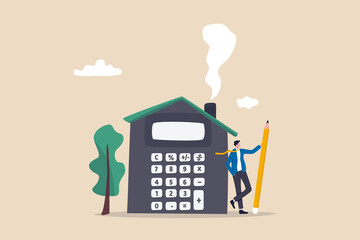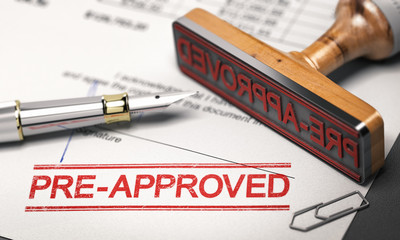

Can Americans Get a Mortgage in Italy? A Complete Guide to Buying Property Overseas
Italy is a dream destination for many, with its rich history, stunning landscapes, and timeless architecture. Whether you’re drawn to the rolling hills of Tuscany, the canals of Venice, or the beaches of the Amalfi Coast, owning a home in Italy is a tempting prospect. But if you’re an American dreaming of buying property in Italy, you may be wondering: can Americans get a mortgage in Italy?
The good news is that Americans can indeed secure a mortgage to buy property in Italy. However, the process is not the same as applying for a mortgage in the U.S., and there are a few unique considerations to keep in mind. This guide will walk you through the steps involved, the types of mortgages available, and the factors you’ll need to consider when navigating the Italian real estate market as a foreigner.
Understanding the Italian Mortgage System
Before diving into the specifics, it’s important to understand how the Italian mortgage system differs from the U.S. system. In Italy, banks offer a variety of mortgage products tailored to both residents and non-residents, including fixed-rate and variable-rate options. While non-residents, including Americans, can apply for mortgages, they may face stricter lending requirements than Italian residents.
Most Italian banks require a substantial down payment, often between 30% and 50% of the property’s value, and the approval process may take longer due to additional documentation requirements for foreign buyers. Despite these challenges, the mortgage market in Italy remains accessible to Americans, particularly those with a solid financial background.
How Americans Can Secure a Mortgage in Italy
To secure a mortgage in Italy, there are several steps you’ll need to follow. These steps can vary depending on the bank and the type of mortgage you choose, but the general process is similar across institutions. Here’s a breakdown of the key steps:
1. Choose a Property and Get an Offer Accepted
The first step is finding the right property and making an offer. Once the offer is accepted by the seller, you’ll sign a preliminary agreement, known as a “compromesso”, and pay a deposit, typically around 10-20% of the purchase price. This agreement is a legally binding contract that outlines the terms of the sale, including the agreed-upon price and timeline.
2. Research Lenders and Mortgage Options
After your offer is accepted, you’ll need to start researching mortgage lenders. Several Italian banks offer mortgage products to non-residents, and some even specialize in mortgages for foreign buyers. Popular banks that cater to international clients include Intesa Sanpaolo, Unicredit, and BNL BNP Paribas. It’s a good idea to compare different lenders to find the best interest rates, terms, and fees.
3. Submit the Mortgage Application
Once you’ve chosen a lender, the next step is to submit your mortgage application. As an American applying for a mortgage in Italy, you will need to provide a variety of documents to prove your financial stability and creditworthiness. These typically include:
- Proof of identity (passport)
- Proof of income (pay stubs or tax returns)
- Bank statements
- Credit report (while Italy does not have a unified credit score system like the U.S., your financial history will still be reviewed)
- Proof of residence in your home country
- Details of the property being purchased
Lenders will assess your financial situation, including your income, debts, and assets, to determine how much you can borrow. Typically, Italian banks offer mortgages covering up to 60-70% of the property’s value for non-residents, though this can vary depending on the bank and your financial profile.
4. Undergo the Mortgage Approval Process
Once your application is submitted, the bank will review your financial documents and the property details. This process may take several weeks or even months, as Italian banks are often more cautious when lending to non-residents. During this time, the bank will also carry out a valuation of the property to ensure it is worth the amount you are borrowing.
If the bank approves your mortgage, you will receive an offer outlining the terms, including the interest rate, repayment period, and any associated fees. It’s essential to review the terms carefully before accepting the offer, as some banks may charge higher interest rates or fees for non-resident borrowers.
5. Sign the Final Agreement and Close the Deal
Once your mortgage is approved and the terms are agreed upon, you can proceed to the final stage of the purchase. This involves signing the “atto di vendita” (deed of sale) in the presence of a notary. The notary is a key figure in the Italian real estate process, ensuring that all legal requirements are met and that the property is transferred correctly from the seller to the buyer.
At this point, you’ll also finalize the mortgage agreement and receive the funds needed to complete the purchase. The notary will handle the registration of the sale and ensure that all taxes and fees are paid.
Types of Mortgages Available to Americans
Italian banks offer several types of mortgage products to non-resident buyers, each with its own advantages and drawbacks. Understanding the different options can help you choose the mortgage that best suits your needs.
1. Fixed-Rate Mortgages
With a fixed-rate mortgage, the interest rate remains the same throughout the life of the loan. This option offers stability and predictability, making it a popular choice for buyers who prefer to know their exact monthly payments. However, fixed-rate mortgages may come with higher interest rates compared to variable-rate options.
2. Variable-Rate Mortgages
A variable-rate mortgage features an interest rate that can fluctuate over time, based on changes in the broader economy. While variable-rate mortgages often start with lower interest rates than fixed-rate mortgages, they carry the risk of increased payments if interest rates rise. This option may appeal to buyers who are comfortable with some level of risk in exchange for potential savings.
3. Interest-Only Mortgages
Some Italian banks offer interest-only mortgages, which allow borrowers to pay only the interest on the loan for a certain period (typically 5-10 years) before starting to repay the principal. This option can reduce monthly payments in the short term but may lead to higher payments later on when principal repayments begin.
4. Balloon Mortgages
Balloon mortgages involve lower monthly payments for most of the loan term, with a large “balloon” payment due at the end. This type of mortgage can be risky for non-residents, as it requires a significant lump sum payment to fully repay the loan. It’s typically best suited for buyers who expect to sell or refinance the property before the balloon payment is due.
Key Considerations for Americans Getting a Mortgage in Italy
While it is possible for Americans to get a mortgage in Italy, there are several important factors to consider before committing to the process. Here are some key points to keep in mind:
1. Currency Exchange Rates
When buying property in a foreign country, exchange rates can significantly impact the overall cost of your mortgage. If the U.S. dollar weakens against the euro, your mortgage payments could become more expensive over time. It’s wise to consult with a financial advisor to mitigate currency risk.
2. Taxes and Fees
In addition to the purchase price and mortgage costs, there are several taxes and fees associated with buying property in Italy. These include notary fees, registration taxes, and property taxes. It’s essential to budget for these additional costs, which can add up to 10-20% of the purchase price.
3. Residency Status
While it’s not necessary to be a resident of Italy to obtain a mortgage, your residency status can impact your borrowing options. Non-residents may face stricter lending requirements, higher interest rates, and lower loan-to-value ratios than residents.
4. Legal Assistance
Navigating the Italian legal system can be complex, especially for foreign buyers. It’s highly recommended to work with a local lawyer who specializes in real estate transactions to ensure that the purchase process goes smoothly and that you fully understand your legal obligations.
FAQs
1. Can Americans get a mortgage in Italy?
Yes, Americans can get a mortgage in Italy, although they may face stricter requirements compared to Italian residents. Italian banks offer various mortgage products to non-residents, and the approval process typically involves additional documentation.
2. How much can I borrow as an American in Italy?
Non-residents, including Americans, can typically borrow up to 60-70% of the property’s value. The exact amount will depend on your financial situation and the bank’s lending policies.
3. What are the interest rates for mortgages in Italy?
Interest rates for mortgages in Italy vary depending on the type of mortgage and the lender. Fixed-rate mortgages generally have higher rates than variable-rate options, but they offer stability and predictability.
4. What documents do I need to apply for a mortgage in Italy?
To apply for a mortgage in Italy, you will need to provide proof of identity, proof of income, bank statements, a credit report, and details of the property you wish to purchase. Lenders may request additional documentation depending on your circumstances.
5. Are there additional costs when buying property in Italy?
Yes, in addition to the purchase price and mortgage costs, there are several taxes and fees associated with buying property in Italy. These include notary fees, registration taxes, and property taxes.
6. Is it better to get a mortgage in Italy or pay in cash?
Whether it’s better to get a mortgage or pay in cash depends on your financial situation and investment goals. A mortgage allows you to spread out the cost of the property over time, while paying in cash can eliminate financing costs.








